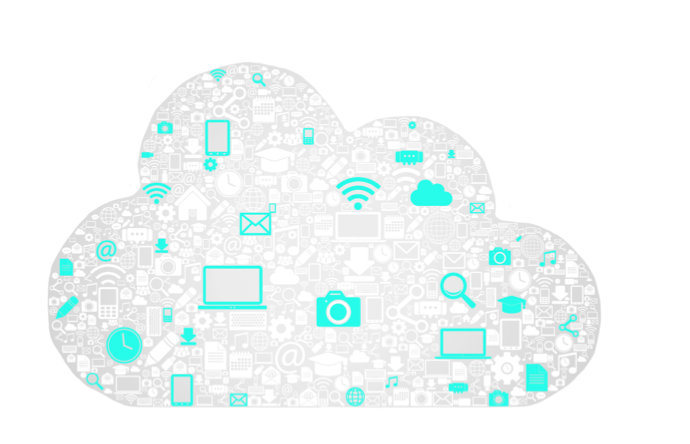Google has been busy this past year. Its engineers have created some amazing things to make the digital transformation easier for organizations, no matter the size and/or capabilities of their development team. Businesses that use data to make critical decisions grow on average more than 30 percent each year, and will take a predicted $1.8 trillion in revenue from less-informed businesses. That growth means competition is fierce, so companies are constantly looking for new ways to adapt to machine learning and cloud computing capabilities and stay ahead of the game.
Here are nine Google Cloud Services recently launched that ClearObject is excited to see more of in 2019:
1. Cloud Healthcare API: The Google Cloud Healthcare API accelerates digital transformation for organizations with existing clinical systems and enables entrants to integrate with care networks. The Cloud Healthcare API bridges the gap between care systems and applications built on Google Cloud. This accelerates digital transformation for organizations with existing clinical systems and enables new entrants to easily integrate with care networks. Once data is brought to the Google Cloud Platform, you can leverage Google Cloud machine learning and analytic tools such as Big Query, which offers highly scalable, managed analytics to produce meaningful insights. The Cloud Healthcare API is currently in alpha and available through Google’s Trusted Tester Program. ClearObject provides additional services for Big Query and Cloud ML Engine.
2. Google Kubernetes on Premise: Google Kubernetes On-Prem (GKE On-Prem) is a reliable, efficient, and secure way to run Kubernetes, an open-source system for automating deployment, scaling, and management of containerized applications. Now, businesses can use GKE both on-premises and in the cloud. Known as a hybrid cloud, this approach enables industries like finance and healthcare the security and reliability they demand with the speed and efficiency of cloud data storage. This gives Google a huge competitive edge with Amazon and Microsoft, who have offered on-premises solutions for years. Now, Google’s quality technology in security, machine learning, and Kubernetes make it a force to be reckoned with.
3. Cloud IoT Edge & Edge TPU: Edge computing enables data to be processed right at the source, making IoT products useful for real-time decision making. Announced in mid-2018, Cloud IoT Edge takes the power of Google’s data processing straight to products like robotic arms, oil rigs, or wind turbines. Complementary to Cloud IoT Edge, Edge TPU equips IoT processes with Google’s machine learning capabilities. Together, Cloud IoT Edge and Edge TPU enhance the ability and efficiency of IoT products, which open doors to future innovations in this space.
5. Cloud IoT Core: With the growth of connected devices in the enterprise, managing and analyzing data can become a cumbersome chore. When Google launched Cloud IoT Core, it gave businesses a way to measure the efficacy and ROI of devices launched anywhere in the world. Combined with Google Cloud IoT products, Cloud IoT Core can provide insights and operational analytics that give businesses and consumers the capability to react or optimize decisions and change in real-time. For example, utility companies using smart meters not only get better readings on customer usage for more accurate billing, but customers can also benefit by changing behaviors in the home that reduce their energy costs.
6. Google Cloud Scheduler: Task scheduling is one of the most important aspects of a developer’s job. It can be challenging to fit scaling infrastructure, monitoring and logging performance, and restarting failed tests into a daily work flow. Unlike typical job schedulers, Google’s Cloud Scheduler enables development teams to automate more task scheduling processes while reducing the overhead of managing and scaling infrastructure. Its powerful logging capabilities give better insight for job execution and performance.
7. Google Cloud Vision: Using deep machine learning to recognize objects in images, Cloud Vision is opening doors for companies to make user search more reliable and accurate. Google’s powerful machine learning models are formulated in an easy-to-use REST API setting to unlock capabilities that quickly classify and label images with specific categories, identify and read printed words in images, and detect individual objects and faces. Data about imagery gives developers more control to build metadata, moderate content, or create inventive marketing scenarios through sentiment analysis.
8. AutoML For Vision: Thousands of customers request modeling that enables them to use Google’s cloud computing to train self-learning image and object detection and recognition. The idea behind this, and Cloud AutoML, is to provide organizations who don’t have machine learning engineers a way to create custom machine learning models in a no-frills, simpler way. Through Cloud AutoML, Google also offers a human labeling service. Developers using Cloud AutoML can request that a collection of images be labeled by human operators, giving the dataset a more accurate view of the images as the machine learning model learns to better read objects and images from your organization. Essentially, this gives Google’s machine learning models a head start when first using Cloud AutoML Vision.
9. Apigee: In 2016, Google acquired Apigee, a platform that allows developers and engineers a way to see every API used in one, concise dashboard. Now that Apigee is part of Google’s behemoth cloud system, Google Cloud users gain access to a full lifecycle API management system that enables API providers to design, secure, deploy, monitor and then scale APIs easily. The platform views runtime API traffic and enforces out-of-the-box policies such as key validation, quota management, transformation, authorization, and access control. This means API providers can use the customizable portal to easily enable and secure API consumption while simultaneously measuring API performance and usage.
All of Google’s newest cloud services are sure to boost the digital transformation for organizations using its high-quality technology and machine learning modules. Making machine learning and other cloud computing technology easy-to-use, secure, and reliable is a relief to businesses that need to stay competitive in a world where data and growth is happening at lightning speed. Here’s to a fantastically technological 2019!

